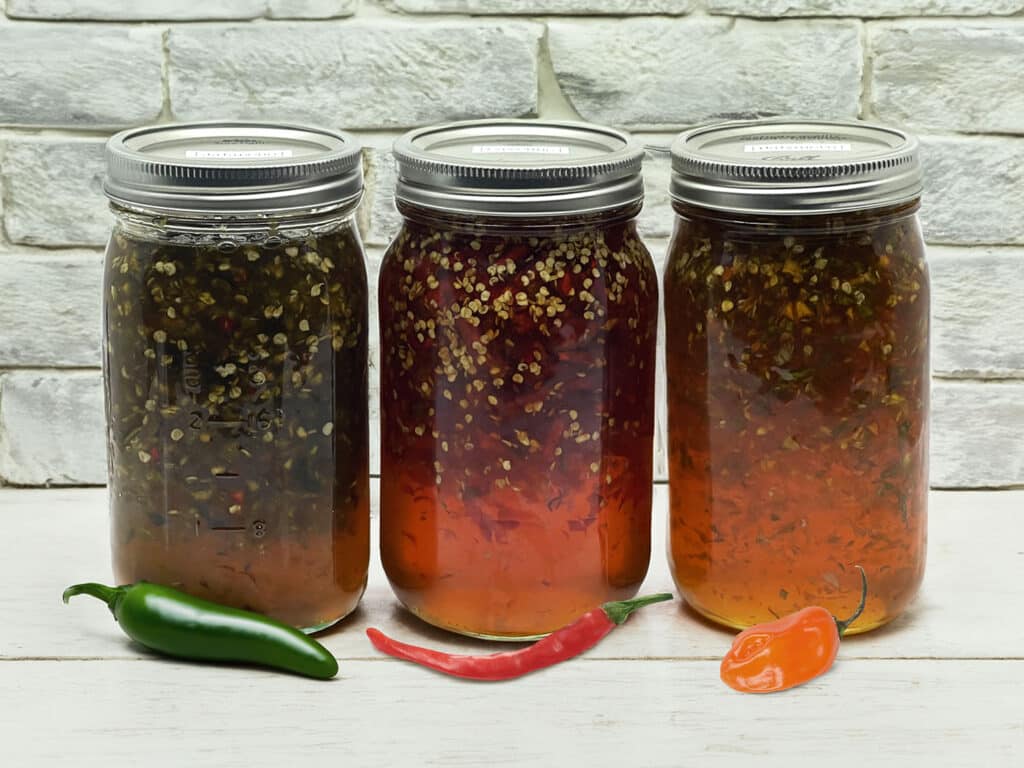Meet Your Ultimate Kitchen Multitasker: Homemade Greek Yogurt

In the world of handy homemade kitchen companions, Greek yogurt is a real stand out. In my home, we’re never without this indispensable multitasker. No exaggeration, I use it every day in one way or another. Greek yogurt’s lovely thick consistency makes it a versatile workhorse in both sweet and savory dishes — and everything in between.
Raindrops on Roses & Whiskers on Kittens

Raindrops on roses and whiskers on kittens… The following carefully curated collections are all tried and true through my own (considerable) trial and error. I think you will be very pleased with anything you buy through this page. Some of the below links are affiliate links. By clicking on them, you’re helping to support my site. Thank you!
Fermented Hot Honey

Hot honey is one of those culinary wonders that is just as home in the medicine cabinet as it is in the kitchen. Melding the sweetness of honey with the spicy heat of peppers, fermented hot honey creates a unique and complex, yet well-balanced flavor profile. The result is a glorious spicy ambrosia that has countless culinary and medicinal uses!
Fermented Foods Rock (& Why You Should be Making Your Own)

By now, most of us have at least a general understanding that maintaining healthy gut bacteria is pretty darn important to our overall health. But what exactly does that mean?
Water Kefir SOS: Troubleshooting Your Brew

Making your own probiotic-rich water kefir can be a rewarding and cost-effective hobby, but as a living culture, it can sometimes throw you a curveball. Room temperature, water quality and inadequate nutrition are just a few factors that can influence the health of your kefir grains and the quality of your water kefir.
Tips & Tricks for Doing GAPS with Kids

My family decided to embark on a healthier eating journey starting January 1. We committed to healthy homemade dinners every single night, no fast food at all and very minimal eating out. The style of eating we decided on is called the GAPS diet, a gut healing nutritional protocol designed by Dr. Natasha Campbell-McBride. Keep reading for some tips and tricks that helped us get the most out of our GAPS diet experience.
Preparing for GAPS

There’s no sugarcoating it; GAPS can be pretty darn time consuming and it’s a lot of pressure on the primary preparer of food.
Getting organized and planning and preparing meals and snacks in advance will save your sanity and help you to anticipate pitfalls and temptations that could derail your progress.
Let’s Talk About GAPS

Hippocrates famously stated that “All Disease Begins in The Gut.” Dr. Campbell-McBride would agree! As turns out, the health of your gut determines just about everything else.
GAPS stands for ‘Gut & Psychology Syndrome’ or ‘Gut & Physiology Syndrome’. The basic premise behind the GAPS protocol is that gut health is closely linked to overall health and that improving gut health can help improve all sorts of conditions ranging from allergies to autism, dyslexia to autoimmune disorders (and ALL chronic diseases have an autoimmune component).
Water Kefir Basics

Inspired by the Wise Traditions conference we attended in October, I have recommitted myself to serving one fermented food (or beverage) with every meal.
One of our favorite (and easiest) ways to get real-food probiotics is with water kefir — a probiotic-rich beverage that is made by fermenting sugar water with a symbiotic culture of bacteria and yeast.
Quick Fermented Garlicky Beets

In addition to the standard perks of transforming a vegetable into a probiotic food rich in beneficial microbes, fermenting beets also reduces oxalates, which improves the bioavailability of minerals. It also preserves the beet’s vitamins C and reduces its sugar content as the lactic acid bacteria consumes beet sugar during the fermentation process.
Fermenting stabilizes and preserves the precious betalains we talked about earlier. Studies suggest that lacto-fermentation can preserve betalain levels for up to a month with no degradation.

